Micro-Implants in Orthodontic Treatment
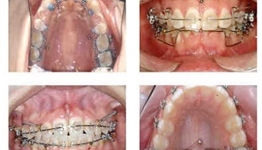
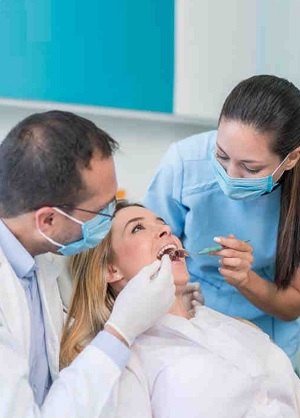
What are micro-implants?
Micro-implants are tiny screws made of commercially pure titanium (99%) or titanium alloy (90%). The microimplants are embedded in bone and they serve as anchor points to move teeth during orthodontic treatment.
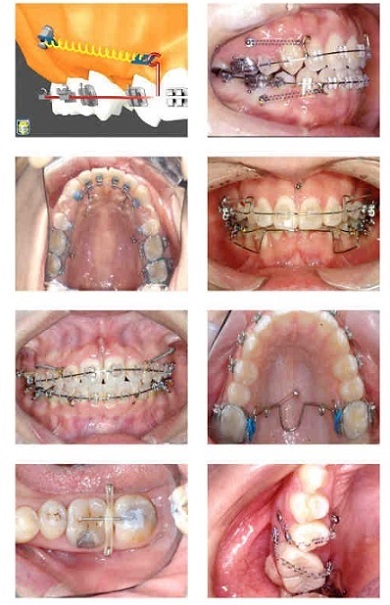
Why are they used in orthodontic treatment?
The method of tooth movement is based on the mechanical principle of using an anchor reference (a stable point) to deliver a force to a tooth or a set of teeth. Traditionally, the anchor reference is a tooth or a set of teeth which has the disadvantage of the anchor reference moving in the opposite direction to the intended tooth movement. Because anchor teeth have the potential to move under a force, it is therefore unable to provide the necessary optimal amount of anchorage to move other teeth in a most efficient and effective manner.
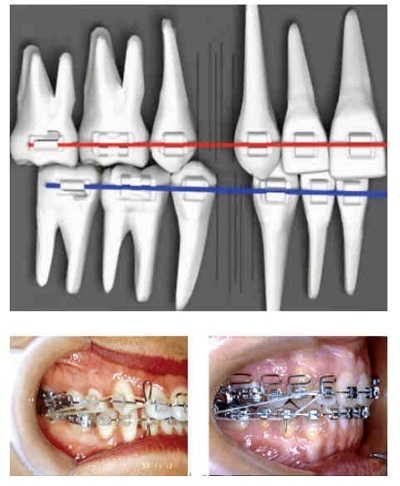
In contrast, micro-implants are embedded into the bone surrounding your teeth and they serve as excellent anchor points for moving teeth. Because these microimplants are embedded in bone, they are not likely to move as compared with anchor teeth. When a force is delivered to move teeth from micro-implant anchors, tooth movement is predictable and more efficient. Accordingly, dental problems involving severe amount of crowding, over-eruption of teeth, forward placement of upper and lower teeth, and significant mismatch of the how the upper and lower teeth meet together may be treated by fixed braces predictably without resorting to surgical correction of the dental problem. Furthermore, the reliance on a person’s compliance to instructions critical to treatment success (e.g. placement of elastic bands for directing tooth movement) is significantly reduced.
What alternatives do I have if I do not wish to have micro-implants?
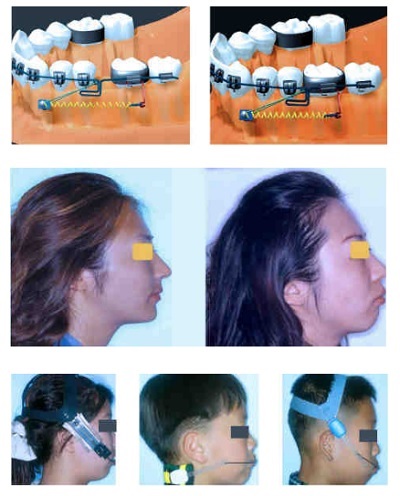
If a patient does not wish to have micro-implants placed in the mouth when they are essential for treatment, the patient will be given alternative means of anchoring teeth for tooth movement. One alternative means involve the wearing of an external head or neck strap such as a headgear and the success of treatment depends much on a person’s compliance to wearing the headgear. In the absence of micro-implants, the surgical correction of the dental problem may occasionally be the only alternative.
How are micro-implants placed in the mouth?
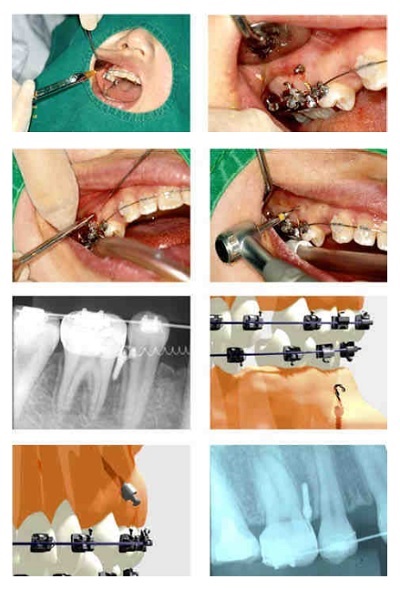
The surface of the gums is anaesthetized by either a spray of local anaesthetic or a patch containing the anaesthetic medication for about 5 to 10 minutes. Sometimes, a local anaesthetic injection may be required to numb the gum surface. Following anaesthesia, a tiny puncture on the gum and bone surface is made by a drill bit and the micro-implants are screwed into the bone surrounding your teeth with a hand-held driver. The entire procedure of placing one micro-implant in bone should be about 5 to 10 minutes after gaining anaesthesia to the end of the placement of the microimplant. The screw of the micro-implant is placed in the bone tissue between the roots of neighbouring teeth. The head of the micro-implant is visible on the gum surface to serve as an anchor point for delivering a force to move teeth.
What are the risks involved with micro-implants?
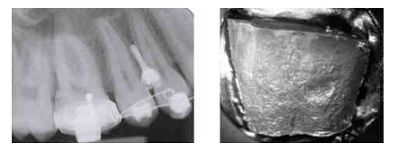
Due to the highly variable shape of tooth roots, there is a small likelihood of the micro-implant contacting the root surface or penetrating the root during the placement procedure. Before the procedure, an x-ray is taken of the location where the micro-implant will be placed so as to guide the dental surgeon in accurate placement of the micro-implant. Should there be an injury to the root surface, the root surface is likely to heal uneventfully.
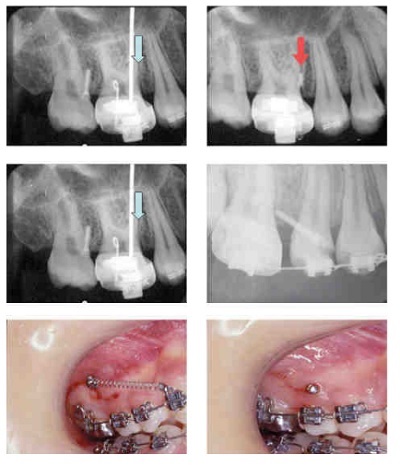
There is a small likelihood of the micro-implant breaking during the placement procedure. Should the microimplant break, the embedded portion can b removed surgically under an injection of local anaesthetic with no further complications.
After the placement of the micro-implant, the subsequent application of a force may result in loosening of the micro implant. The likelihood of this happening is about 1 or 2 in 10. The loosening of the micro-implants may be due to the following reasons: the quality of your bone, a person’s bite force, or the contacting of the micro-implant with a root surface. In addition, there is a minor risk that the micro-implant may be rejected by the body due to differences in a person’s bodily response to a foreign material. Should loosening happen, the micro-implant will be removed and a new micro-implant will be inserted at a different location.
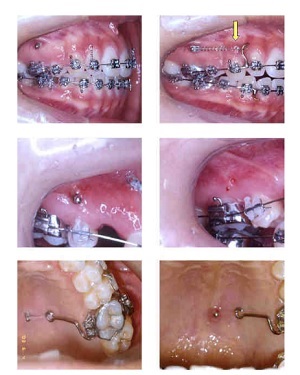
What other possible complications may arise from use of micro implants?
- The gums around the micro-implant may be inflamed due to the irritation from the springs attached to the micro implants. The inflammation is reversible, and the health of the gums will return to normal after the removal of the springs.
- Should you have a medical condition that affects wound healing (e.g. Diabetes) or if you are a chronic heavy smoker, there is a high likelihood of your gums being inflamed and a poorer healing of the bone locations where the micro implants are placed.
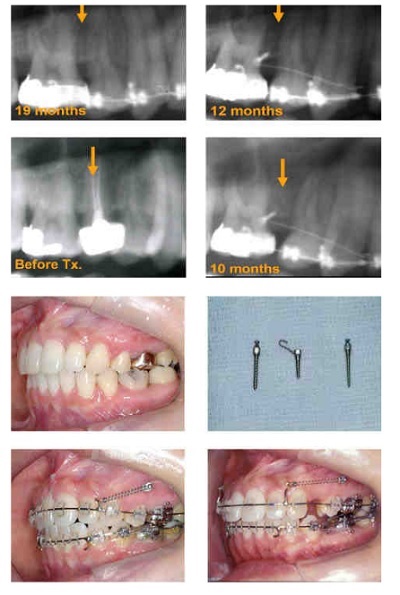
How long will the micro-implants be in the mouth? Are there side effects if the micro-implants are left in the mouth after treatment?
The micro-implants will be removed at the end of the course of orthodontic treatment. There will be no side effects on the surrounding tissues if the microimplants are left in the mouth after treatment as they are biocompatible, and the material is identical to the implants used for restoring missing teeth with crowns and bridges which are placed in the mouth permanently
Orthodontists receive an additional two to three years of specialized education beyond dental school to learn the proper way to align and straighten teeth. Only those who successfully complete this formal education may call themselves “orthodontists,” and only orthodontists can be members of the American Association of Orthodontists.
If you have any questions or concerns throughout your treatment or in the future, please consult your orthodontist.



